



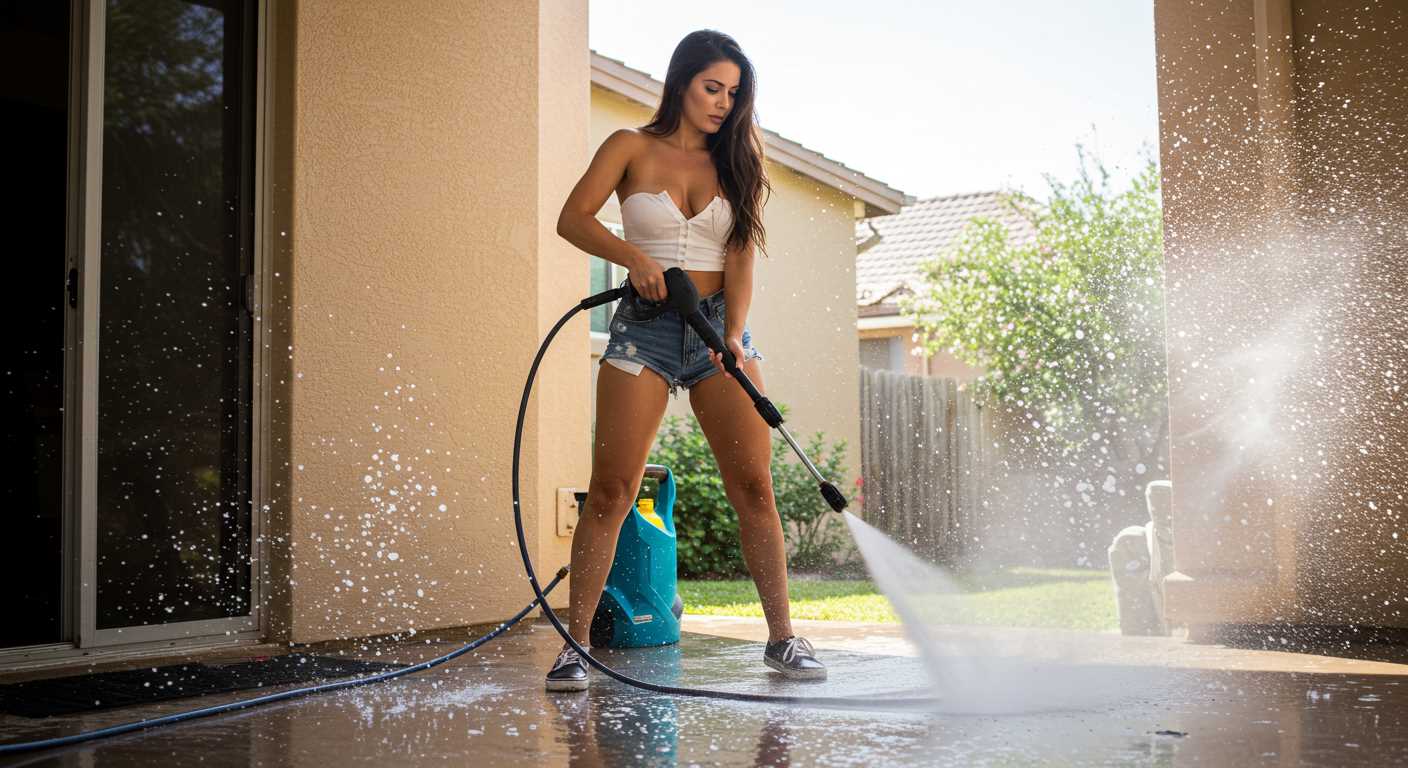
For effective cleaning, a minimum of 1300 to 2000 PSI is recommended when using a high-pressure cleaning machine. This range is suitable for residential tasks such as washing cars, patios, and decks. For more demanding jobs like stripping paint or cleaning heavy machinery, aim for a unit that can deliver 2500 PSI or higher.
In my experience, the flow rate, measured in gallons per minute (GPM), is equally significant. A flow rate of 1.5 to 2.5 GPM is generally adequate for most household applications, while commercial-grade tasks may require upwards of 3 GPM. Higher flow rates help reduce cleaning time and improve efficiency, especially when using detergents.
During my tenure in the cleaning equipment industry, I encountered various models that excelled in specific scenarios. For example, I once tested a unit designed for home use that operated at 1500 PSI and 1.8 GPM, which effectively tackled dirt on a driveway. However, switching to a more powerful model with 3000 PSI and 4 GPM transformed my experience when cleaning a heavily soiled industrial site. The difference was remarkable.
Understanding the balance between these two factors can enhance your cleaning results significantly. When selecting your machine, consider the tasks you will perform, as well as the surfaces you will clean. This assessment will guide you towards the right specifications and ensure your cleaning projects are completed efficiently and effectively.
Understanding Pressure Ratings in Pressure Washers
For optimal cleaning performance, a unit should have a rating between 1300 and 3000 psi, depending on the task. When I first started working with these machines, I quickly realised that not all jobs require the same force. For instance, light tasks like washing cars or patio furniture can be efficiently handled with around 1300 to 2000 psi. In contrast, tougher jobs, such as removing grime from driveways or stripping paint, often demand pressures exceeding 2500 psi.
During one particular project, I used a unit rated at 3000 psi to clean an old wooden deck. The results were stunning, but I encountered a significant issue: the wood began to splinter. It was a valuable lesson in understanding that higher ratings aren’t always better for every surface. This incident taught me to consider the material being cleaned and adjust my approach accordingly.
Among the various models I’ve tested, electric machines typically range from 1300 to 2000 psi, making them suitable for lighter tasks. Gas-powered versions, on the other hand, can reach up to 4000 psi, ideal for heavy-duty applications. Choosing the right equipment means aligning the pressure rating with the cleaning challenge at hand.
Another aspect to keep in mind is flow rate, measured in gallons per minute (GPM). A unit with a higher GPM will remove dirt more effectively, as it delivers more cleaning solution in a shorter time. For instance, a machine with 2.5 GPM at 2000 psi will clean faster than one with 1.5 GPM at the same pressure. Balancing these two factors is key to achieving the desired outcome without damaging surfaces.
Always consult the manufacturer’s guidelines for specific recommendations on the pressure range for different applications. Each unit may have unique specifications that influence its performance. I’ve found that adhering to these guidelines not only enhances effectiveness but also prolongs the life of the equipment.
Optimal PSI for Different Cleaning Tasks
For light tasks like washing vehicles or cleaning outdoor furniture, a setting of 1200 to 1900 PSI works well. I recall cleaning my car with a smaller unit at 1500 PSI, which effectively removed dirt without damaging the paint. Always keep the nozzle at a safe distance to avoid any mishaps.
Medium tasks, such as cleaning patios or driveways, require a range of 1900 to 2600 PSI. I remember tackling my driveway, which had years of grime. Using a machine set at 2200 PSI, I noticed a significant difference in the results. The surface became noticeably cleaner, and the effort was minimal.
For heavy-duty jobs like removing paint or tackling stubborn stains on concrete, opt for 2700 to 3100 PSI. I once worked on a project where I needed to strip old paint from a wooden deck. A machine with 3000 PSI made the task manageable and efficient, allowing me to complete the job in a fraction of the time.
Specialty tasks, such as cleaning delicate surfaces or vehicles, might require even lower settings, around 800 to 1200 PSI. I found this especially useful when cleaning my garden statues, where any excess force could cause damage. A lower setting combined with a wide nozzle provided a gentle yet thorough clean.
Always test on a small, inconspicuous area first to ensure the pressure is appropriate for the surface. Each material reacts differently, and it’s better to be cautious. My experiences taught me that adjusting the settings based on the task at hand can significantly impact the outcome, yielding impressive results with minimal effort.
How Flow Rate Influences Cleaning Equipment Performance
For optimal results, aim for a flow rate of at least 2.0 GPM (gallons per minute). This rate ensures that the cleaner can effectively tackle dirt and grime without leaving residue behind.
During my years in the industry, I encountered various models with differing flow rates, and the performance varied significantly. Here are some key insights:
- Higher Flow Rates: Units with a flow rate above 2.5 GPM excelled at rinsing away debris quickly. For instance, while cleaning large driveways, machines with this capacity saved time and effort.
- Lower Flow Rates: Machines operating below 1.5 GPM often struggled with persistent stains. I recall using one such unit on a particularly stubborn oil stain; it required multiple passes and additional scrubbing, which wasted time.
- Balance with PSI: A high flow rate paired with moderate PSI delivers superior results. I often recommend a combination of around 2.3 GPM with 1500-2000 PSI for residential tasks.
It’s important to consider the task at hand. For delicate surfaces like wooden decks, a lower flow rate helps prevent damage. Conversely, heavy-duty jobs, such as cleaning industrial equipment, benefit from a higher flow rate for effective rinsing and cleaning.
When selecting equipment, always check specifications for flow rate alongside pressure ratings. In my experience, overlooking flow rate can lead to frustration during cleaning tasks. A balanced approach ensures efficiency and a satisfying cleaning experience.
Lastly, remember that the source of the supply can impact performance. In some cases, garden hoses may limit flow, so consider the diameter and length of the hose being used. I once faced a situation where a long, narrow hose reduced flow significantly, complicating a simple job.
Identifying the Right Pressure for Home Use
For most household tasks, a unit operating at 1300 to 2000 PSI is ideal. I’ve found that this range effectively tackles dirt on patios, vehicles, and garden furniture without causing damage to surfaces. When I first started in this field, I made the mistake of using a higher-rated device on a delicate surface, which led to some unsightly marks. Lesson learned!
Choosing the Right Model
When selecting a unit, consider the type of surfaces you’ll be cleaning. For wooden decks or painted surfaces, stick with the lower end of the scale. My experience has shown that 1500 PSI works wonders on these materials, providing enough force to clean without stripping away finishes. On the other hand, concrete driveways can handle much more–up to 3000 PSI for stubborn stains.
Adjustable Options
Many modern devices come with adjustable settings, allowing you to tailor the output based on the task. I often recommend starting at a lower setting and gradually increasing the force until you achieve the desired results. This approach not only protects your surfaces but also conserves energy and water, making your cleaning sessions more sustainable.
Commercial vs. Residential Pressure Washer Requirements
For commercial applications, units typically range from 3000 to 4000 PSI, with flow rates of 4 to 8 GPM. This allows for rapid cleaning of large areas and tough grime without excessive effort. In my experience, businesses often require robust machines due to the volume of work and the necessity for durability. I’ve seen contractors favour models that offer both high PSI and GPM, as they provide the versatility needed for various tasks, from cleaning heavy machinery to preparing surfaces for painting.
On the other side, residential machines usually sit between 1300 and 2500 PSI, with flow rates of 1.5 to 3 GPM. Homeowners generally need equipment that is user-friendly and efficient for seasonal cleaning like decks, driveways, and vehicles. When I tested these lower-powered models, I found that they can effectively handle light to moderate dirt without overwhelming the user. A 2000 PSI unit, for example, was sufficient for most household tasks, making it an ideal choice for everyday use.
Maintenance also varies significantly. Commercial units often include more robust components, designed to withstand frequent use. I remember a time when a colleague opted for a residential model for his business. Within weeks, it struggled under the workload, leading to repairs that could have been avoided with a more suitable option. Investing in the right type, whether for home or business, can save time and money in the long run.
In conclusion, selecting the appropriate machine hinges on understanding the specific needs of the task at hand. If you plan to engage in regular, heavy-duty cleaning, a commercial unit will serve you better. For lighter, infrequent jobs, a residential model should suffice. Always consider both PSI and GPM to ensure you have the right tool for your needs.
Factors Influencing Required Water Pressure
Choosing the right level of force for cleaning tasks relies heavily on various determinants. Key aspects include surface type, level of grime, nozzle selection, and cleaning solutions. Each of these factors plays a crucial role in achieving effective results.
Surface Type: Different materials require specific force settings. For instance, delicate surfaces like wood or painted areas need lower force to avoid damage, while concrete or brick can withstand higher levels. I once tackled a wooden deck restoration; using too high a force stripped the finish. A delicate approach yielded far better results.
Level of Grime: Heavily soiled surfaces demand increased force. Grease, oil, and stuck-on debris require more intensity to lift away. I recall a time when I underestimated the grime on a garage floor. A lower setting left some stains untouched, while a quick adjustment to a higher setting cleared everything in moments.
Nozzle Selection: The choice of nozzle impacts force distribution. A narrow nozzle concentrates the stream and increases intensity, making it suitable for tough spots. Conversely, a wider nozzle disperses the flow, ideal for broader surfaces. I discovered this during a cleaning session on my driveway; switching nozzles significantly improved efficiency.
Cleaning Solutions: The use of detergents or other cleaning agents can reduce the need for high force. Chemical action can break down tough grime, allowing for lower settings to finish the job effectively. I often mixed a special solution for vehicles, which allowed me to use a gentler approach while achieving a spotless finish.
| Factor | Influence on Required Force |
|---|---|
| Surface Type | Delicate surfaces need lower force; tough surfaces can handle more. |
| Level of Grime | More stubborn dirt requires higher force for effective cleaning. |
| Nozzle Selection | Narrow nozzles increase intensity; wide nozzles cover broader areas. |
| Cleaning Solutions | Chemicals can allow for lower force by aiding in grime removal. |
Understanding these factors enables better decision-making for optimal results. Adjusting force according to specific requirements not only enhances cleaning effectiveness but also prolongs the lifespan of surfaces treated. It’s all about achieving that perfect balance for each unique situation.
Adjusting Water Pressure for Various Surfaces
For optimal cleaning results, tailor the force of the stream to the surface being treated. For example, delicate surfaces like car paint require a lower setting, typically around 1200 to 1900 PSI, to prevent damage. Conversely, tougher materials like concrete can withstand much higher forces, ranging from 2500 to 3000 PSI.
Here’s a quick reference table for common surfaces and their recommended force settings:
| Surface Type | Recommended PSI |
|---|---|
| Car paint | 1200 – 1900 |
| Wood decking | 1500 – 2000 |
| Brick and masonry | 2500 – 3000 |
| Concrete driveways | 3000 – 4000 |
| Patios | 2000 – 3000 |
| Fencing | 1500 – 2500 |
Adjustments can make a considerable difference in both performance and safety. Too high a force on fragile materials risks chipping or stripping paint. I once witnessed a colleague use an excessive setting on a wooden fence, resulting in deep gouges. Always start with a lower setting and gradually increase it until you find the sweet spot for the surface.
Having the right equipment is also vital. For those looking for robust options, a model with a rating around 160 bar can provide versatility for various tasks without compromising on safety.
Finally, remember to maintain a distance of about 2 feet from the surface during operation, adjusting as necessary based on feedback from the cleaning process. This distance helps prevent any unintended damage while ensuring effective cleaning.
Common Myths About Pressure Washer Water Pressure
Several misconceptions circulate regarding the force generated by these cleaning machines. Clarifying these myths can enhance your experience and effectiveness when working with this equipment.
Myth 1: Higher PSI Equals Better Cleaning
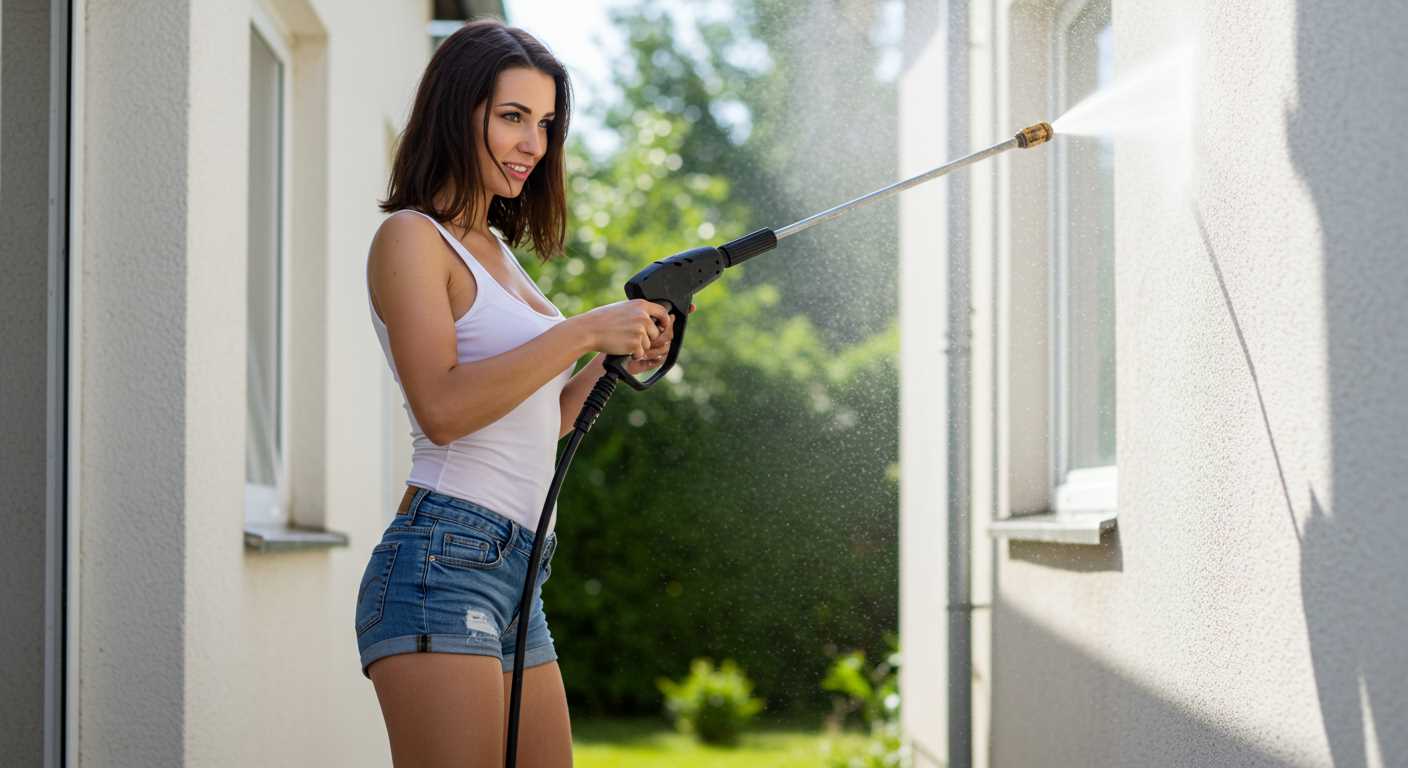
A common belief is that greater PSI guarantees superior cleaning results. While it’s true that higher ratings can tackle tougher stains, using excessive force can damage delicate surfaces like wood or paint. Selecting the appropriate setting for the task is paramount.
Myth 2: All Units Require the Same Flow Rate
Another misconception is that all models function equally well with any flow rate. In reality, each design has specific requirements. An optimal flow rate ensures that the unit operates efficiently, maintaining effectiveness without compromising performance. Always check the manufacturer’s specifications for your device.
Myth 3: Adjusting Pressure for All Tasks Isn’t Necessary
Many users underestimate the importance of adjusting settings for different surfaces. For instance, what works on concrete might wreak havoc on softer materials. Adapting the force can prevent damage and yield better results.
- Use lower settings for painted surfaces.
- Higher settings are suitable for driveways and decks.
- Always test on a small area first.
Myth 4: Any Hose Will Do
Some believe that any garden hose can connect to the equipment. However, not all hoses can handle high flow rates effectively. A compatible hose ensures optimal performance and avoids issues related to flow restriction.
Myth 5: Cleaning Agents Don’t Matter
Another fallacy is that cleaning agents are unnecessary. While high force can remove grime, using the right cleaning solutions can enhance results significantly. Certain detergents are designed to work in conjunction with the equipment’s capabilities, making the task easier.
In my experience, debunking these myths can transform your approach to cleaning tasks. Understanding the capabilities and limitations of your equipment will lead to better outcomes and increased satisfaction with the results.
Maintenance Tips to Ensure Consistent Water Pressure
Regularly inspect hoses and fittings for leaks. A minor crack can cause significant drops in performance. I remember one time, a small puncture in the hose went unnoticed, leading to frustratingly low flow during a crucial job. Replacing damaged hoses immediately is key.
Ensure filters are clean. Clogged filters can restrict the supply, affecting the overall output. After a busy week of cleaning, I always check the inlet filter and clean it if necessary. It’s a small task that pays off in efficiency.
Monitor Connections
Check all connections periodically. Loose or corroded fittings can lead to pressure fluctuations. I’ve had instances where a simple tightening of a connection resolved inconsistent performance issues. A reliable seal is essential for optimal function.
Winter Storage Precautions
During off-seasons, protect your equipment from freezing. Water left in the pump can cause damage. I make it a habit to drain all components before storing them. This simple step prolongs the life of the machine and ensures it’s ready when needed again.
Finally, consider regular professional servicing. While I handle most maintenance tasks, having a technician inspect the unit annually provides peace of mind. They can identify potential issues before they become costly repairs. If you want to explore more about the reliability of various devices, check out this link on are digital cameras better than cell phones. It offers insights into performance expectations across different technologies, similar to maintaining your cleaning equipment.

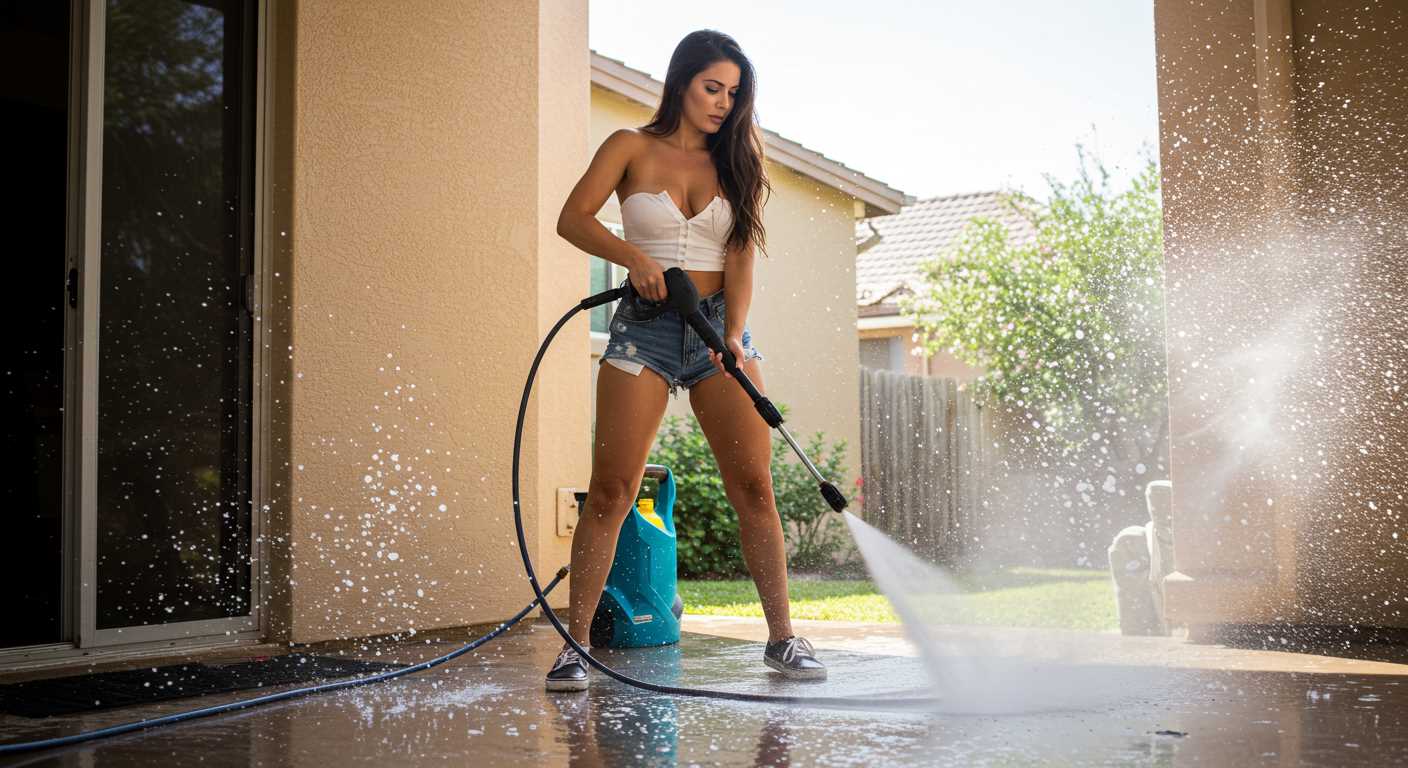
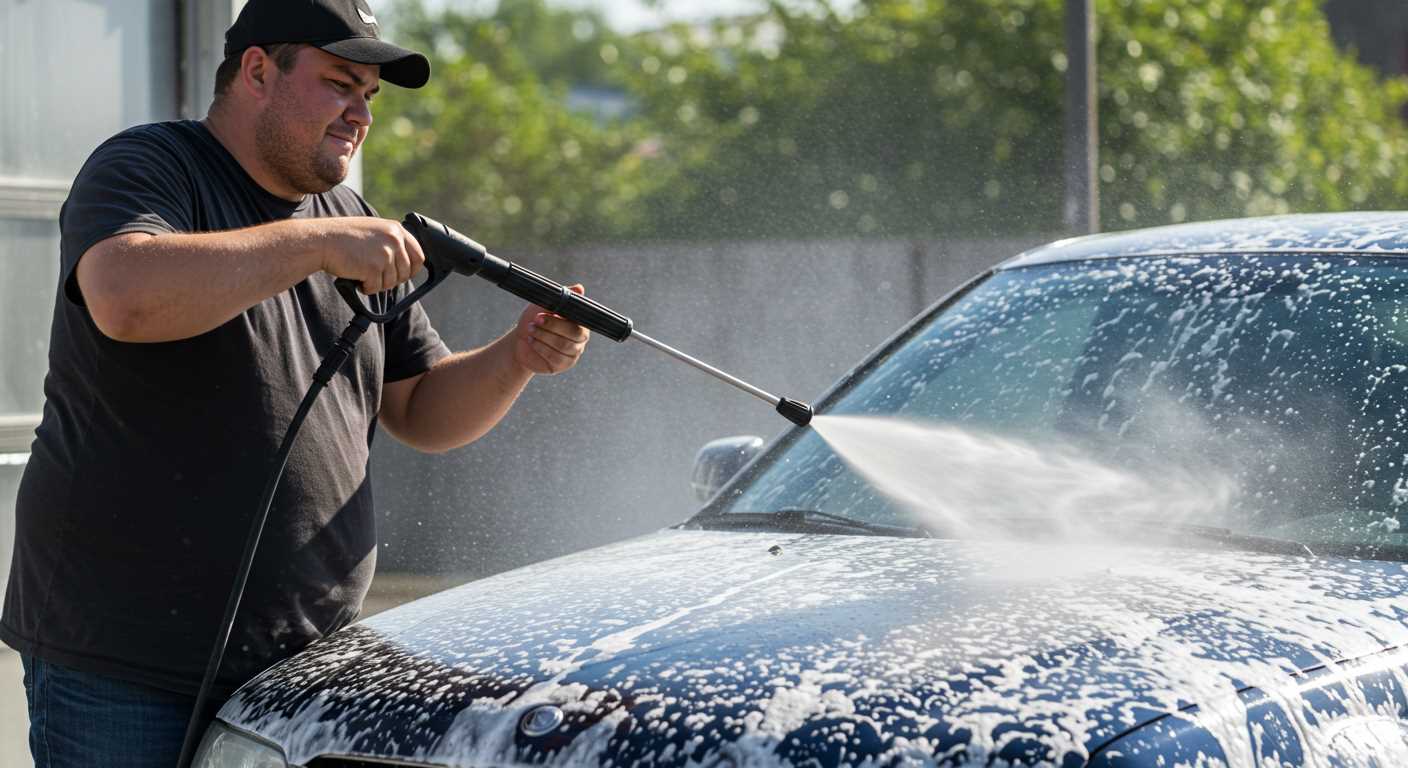
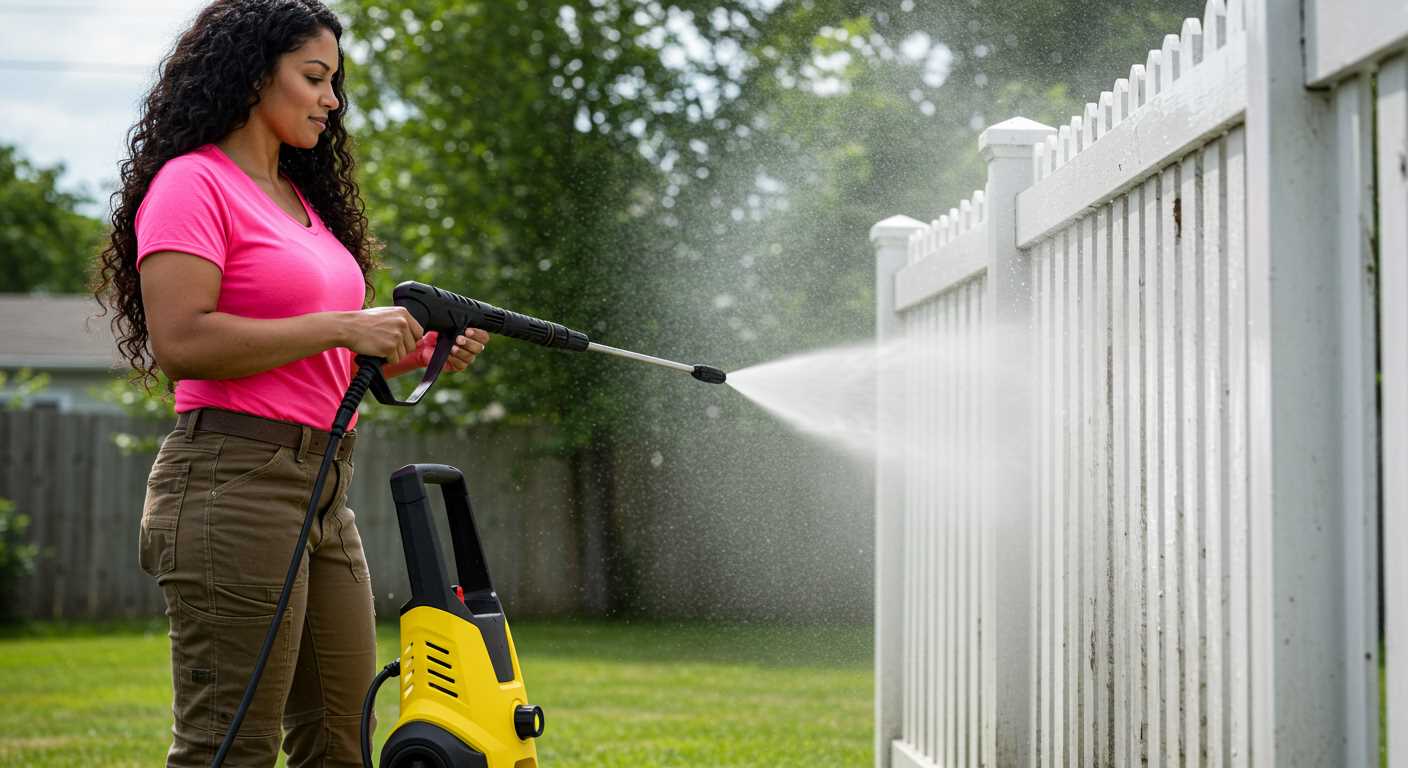
.jpg)


